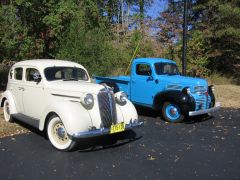
dmartin_egroup
-
Posts
43 -
Joined
-
Last visited
Content Type
Links Directory
Profiles
Articles
Forums
Downloads
Store
Gallery
Blogs
Events
Everything posted by dmartin_egroup
-
My "go back" function is not working. When I go into someone's post, I am supposed to get back out by left-clicking the left-pointing arrow on the browser, or else right click to get a little dialog box where I can click a left-pointing arrow to back out of the posting. Other web forums are still working correctly, so I think something has changed about P15-D24.
Dennis in W. Tenn



